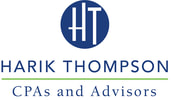|
Implementing the practice of conducting one-on-one meetings with your employees is an excellent way to begin establishing rapport, ultimately making your employees feel appreciated and improving their productivity levels overall. While most managers are aware of the benefits of one-on-ones, not every employer understands how to improve one-on-one meetings in an effective manner. In a survey by the collaborative app company known as Hypercontext, approximately “72% of managers indicated that one-on-ones were the most, or one of the most important things they do to manage the performance of their teams” and “75% of managers felt that employees left their one-on-ones more motivated.” From the perspective of the employees, “58% of employees said they left one-on-ones more motivated than they were prior to the meetings.”
Even though managers and employees are typically on the same page regarding the positive effects of one-on-one meetings, the two parties do not always share identical opinions regarding the process of participating in a one-on-one meeting or how these meetings are executed. According to Hypercontext once more, it appears that “managers as a whole were more bullish on the positive impact one-on-ones were having on their team” than the employees were. So although you as a manager might believe that a one-on-one meeting unfolded successfully, your employees might not, which is a discrepancy worth addressing. Inefficient one-on-ones will yield negative results that can manifest in unfavorable behaviors at work, like an increased number of absences, low productivity levels, or higher turnover rates. In order to combat these unwanted consequences, consider the following tips, which can help you make your one-on-one meetings more ideal for both you and your employees. Prepare for the meetings ahead of time Per the Harvard Business Review, it has been said that “one-on-one meetings with direct reports often feel more hurried and disorganized than they need to be.” One major way to prevent the one-on-one meetings that you conduct from feeling rushed is by planning ahead in advance of the meeting. Instead of winging it and going with the flow during the meeting, try to implement the following habits:
Learn the difference between a successful and an unsuccessful one-on-one When you understand how an inefficient meeting differs from an effective one-on-one, you can easily aim for the good and steer clear of the bad. In the same Hypercontext survey quoted earlier, it was shown that managers and employees both consider the following signs good indicators of a successful one-on-one meeting:
On the other hand, both managers and employees have mentioned that these are indicative of poor or dissatisfactory one-on-one meetings:
One-on-one meetings are an unmatched opportunity for you and your employees to connect with one another on a professional yet in-depth level. Doing so will often boost the productivity levels and performance of your team as a whole, but especially individually. However, in order for that to happen, both you and your employees will need to put forth effort and work as a team to maximize the benefits of your one-on-one meetings. At the end of a meeting, both you and your employees should leave the one-on-one feeling like your time was well spent and meaningful. Comments are closed.
|
Newsletter articles are posted every 2 weeks. If you would like to have our e-newsletter delivered directly to your inbox, please sign up. Your information is confidential; you can unsubscribe at any time. Subscribe. Categories
All
|
Proudly powered by Weebly

 RSS Feed
RSS Feed